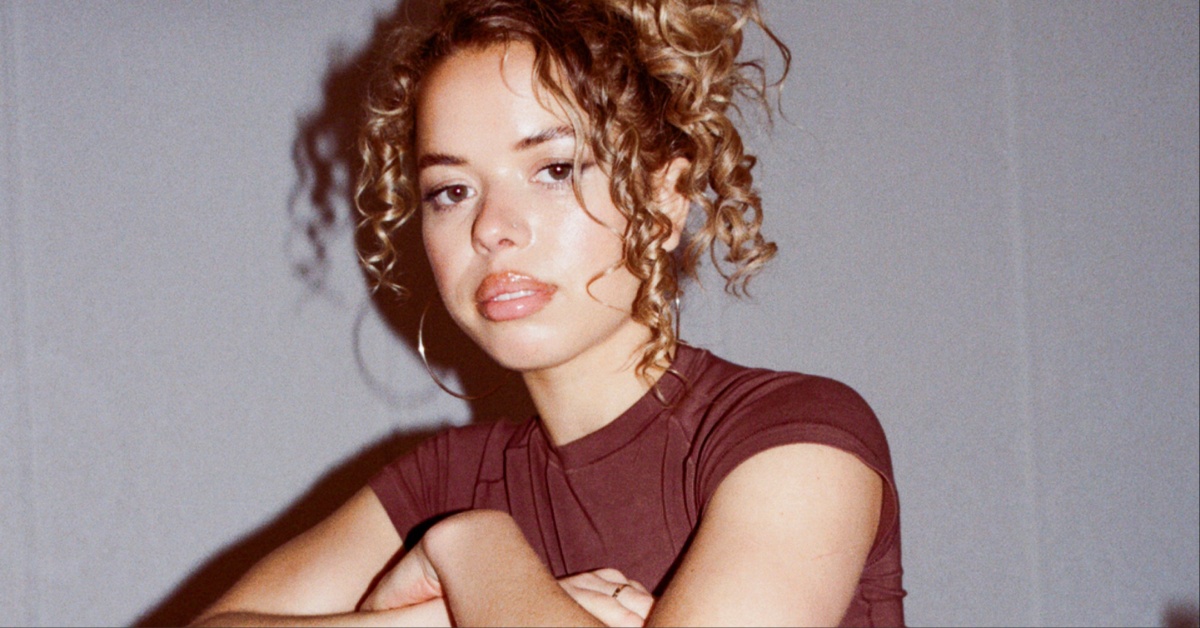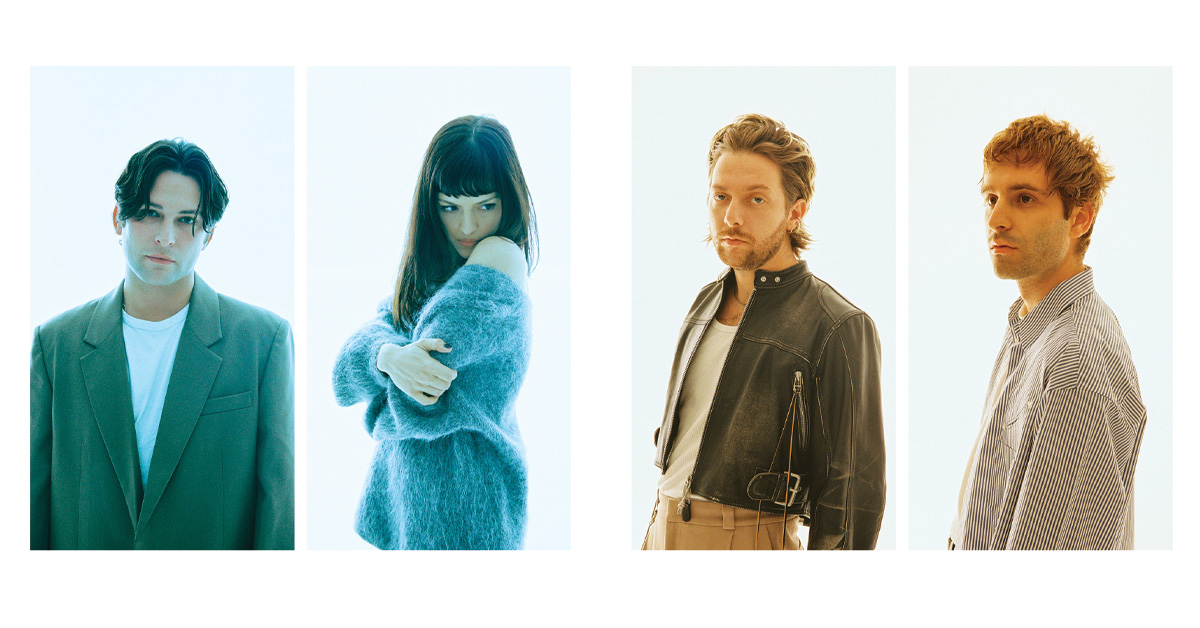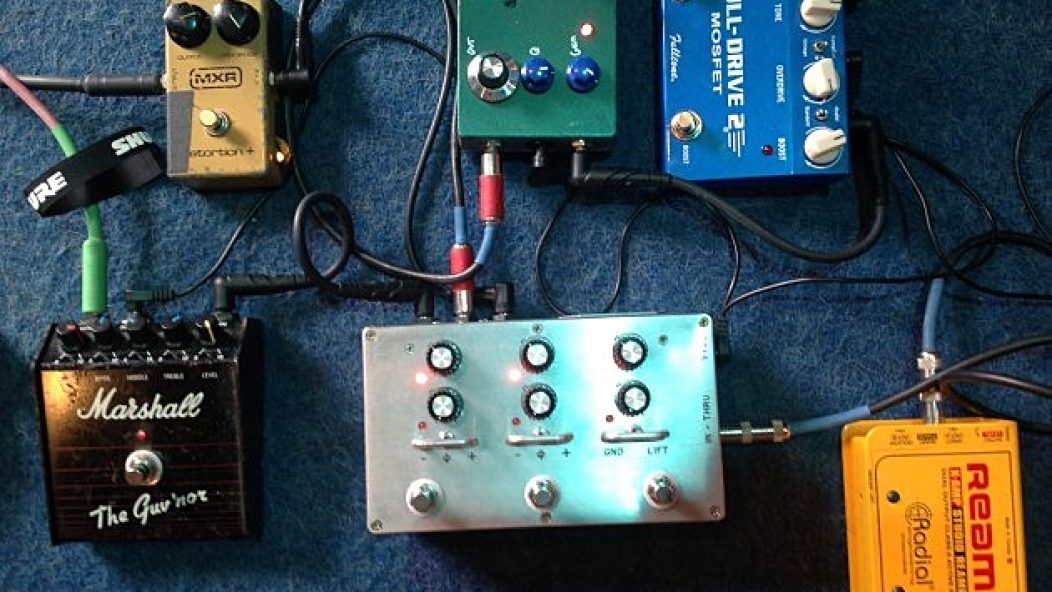
Deeper than Studio: How to Make a Record with Vhöl pt. 2
…
This is the second part of a three part series. Read part 1 here.
Tracking the Basics
…
Your songs are ready and the band is as tight as they can be. It’s time to step inside the studio and knock shit out. Choosing a studio can be daunting though. Every region of America has a range of spots to choose from both in quality and price, and it’s ultimately up to you to consult friends and online information to find your ideal studio.
For Vhöl, the search was a little easier. They opted to go with Light Rail Studio, the recording studio side of their rehearsal facility. Vhöl tracked and mixed the bones of Deeper than Sky there, with engineer Nick Dumitriu running the sessions. Paying bills is a problem that many studios encounter on a daily basis, but Light Rail found a solution in establishing a rehearsal facility.
“We are a full-service vintage/modern recording studio with a 25-year history in San Francisco,” Dumitriu explains. “We love having a recording studio with a rehearsal facility that helps us pay rent. That’s why we’re able to have tape machines and vintage analog consoles–all that old finicky shit that’s tough to have in this town nowadays.”
…
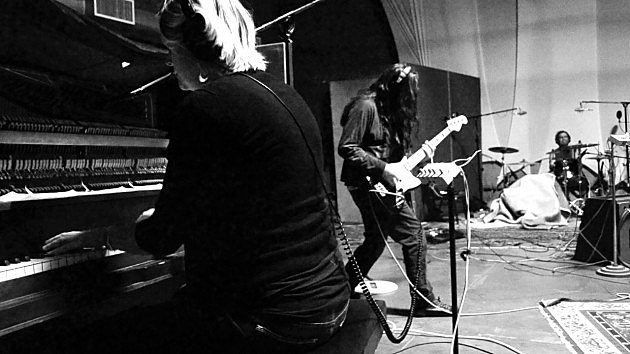
Photo by Cobbett
…
Before the work begins, an aural reference can help your recording engineer. John Cobbett was more than prepared. “I played Nick a couple of tracks before we started recording. We basically said, ‘This is the kind of sound we want,’” he explains. “Specifically, they were a couple tracks off of Taken By Force by the Scorpions. What was the guy, Dieter Dierks that did that one? Especially this track, ‘I’ve Got to Be Free,’ the bass and kick drum, it just sounds great.” A reference gives your engineer a template to shoot for when sculpting the recorded tones of your instruments. Without one, they’re left to sonically interpret your requests, which may or may not produce the results you’re looking for.
…
…
The classic image of groups in the recording studio shows them running through takes as a whole band, or tracking instruments one at a time. Modern technology and budgets have changed that picture. Like many bands that have been around the block, Vhöl recorded (or “tracked”) their basics—10 drum tracks and bass guitar, both direct-in and mic’d—live. Cobbett had his parts recorded as scratch tracks so the band could better identify their place in the song. There’s no better marker in a song than a riff after all. Dumitriu went with classic studio workhorses when it came to his microphone selection: Shure SM-57s, Sennheiser MD-421s, Royer R-121 ribbon mics, AKG 414s, AKG C-452s were used on several sources. An AKG D112, a Yamaha Sub-Kick unit and an AKG C-12 mic’d through a homemade tunnel gave Aesop Dekker’s kick drum the punch and bite it needed in the mix.
…
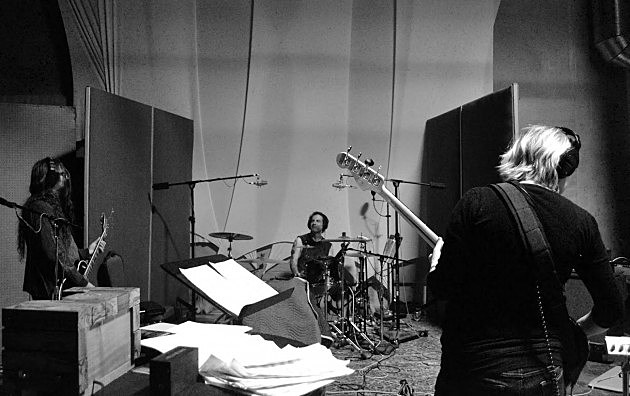
Photo by Cobbett
…
Recording studios widely vary when it comes to the usage of analog and digital technology. Many smaller spaces simply go from the mic’d and amplified signal through analog-to-digital converters into digital audio workstations (or “DAW”) such as Pro Tools, Logic Pro or Cubase. Others continue to use fully analog consoles and tape, claiming that the sound is more natural and warmer compared to the result of recording digitally. Some go with an analog/digital hybrid workflow—Light Rail did just that, sending the mic’d signal through hardware pre-amps like the Telefunken V72 and Altec 1567 and then into an analog mixing console, a vintage Trident A-Range unit.
“It’s just divine, a super aggressive British preamp with a wonderful equalization curve,” Dumitriu says of the console’s guts. “We boosted a little 10kHz on a lot of everything because it just sounds so good, but with EQs this good it almost doesn’t matter what you’re boosting or cutting, it’s just going to sound awesome. It’s pretty hard to fuck it up.” From the console, the signal then hit multi-track tape before going into Pro Tools. “Pro Tools is fine, but to get the drums and bass all kind of dirty and disgusting and big, I need fat tape. I haven’t heard a plug-in do it yet,” Dumitriu says.
…
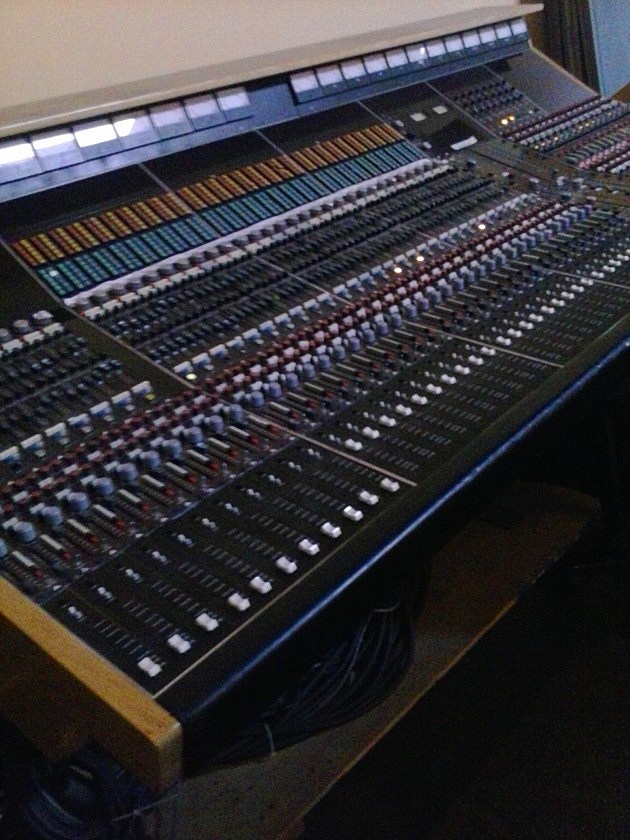
Photo by Cobbett
…
Overdubs: Guitar and Vocals
This is where your band can save some dough when making the album. Where guitarists of the past once spent hours and hours in the studio attempting to nail that tricky riff or uber-fast solo—blowing hundreds, even thousands of dollars in the process—they can now be tracked at home for a lesser cost. This is thanks to a recording technique called reamping. With a cheap audio interface, guitarists can plug into their computer and record raw tracks on a DAW while monitoring through an amplifier simulator (or “amp-sim”), edit the tracks to their desire, then play those tracks through gear at a studio and record the result. The initial investment may be large; one-time purchases will include the audio interface, a moderately powerful computer, DAW software and amp-sims.
Depending on your schedule, you may also find yourself taking time off work to track. The benefit however, is that you are no longer burning through costly studio hours perfecting takes. This new home tracking rig is also yours to use in perpetuity, for however many records you wish to make in the future. With Vhöl, Cobbett treated his home recordings with the same diligence as he would in the studio, nailing takes in large sections at a time rather than making extensive edits to his parts.
…
…
“I get stem mixes of the basics, bring them back here [to his home studio], import them into a new Logic session and then record guitars here at home, using amp simulators. When I’m done I get rid of the simulators, put the raw guitar tracks on a drive and take it back to Light Rail, where we have a giant pile of real amps,” Cobbett says. “We’d re-amp each guitar through three different amps at a time, two mics on each amp. For each one guitar, there would be six tracks: two mics, three amps.” For the guitars themselves, Cobbett went with rock n’ roll classics: a Gibson Les Paul, a Gibson SG and a Fender Telecaster.
…
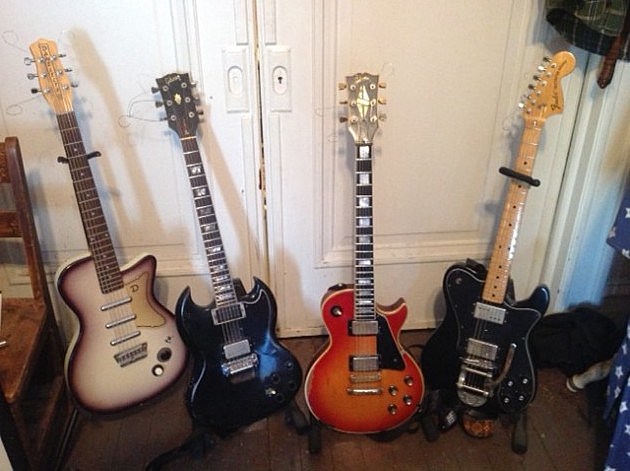
Photo by Cobbett
…
“All those [guitars] went through a various combination of amplifiers,” Dumitriu remembers. “One was a Marshall JMP stack, there was a ’69 Marshall JMP combo, a mid ‘80s JCM 800 and a Peavey 6505 stack. There was a 1959 Fender Tremolux and I think that was it.” The two employed a secret weapon however, one that screams in your face in the chorus of track one on Deeper than Sky, “The Desolate Damned.” Dumitriu quickly recalls their ace. “Oh, and [there was] the Peavey Rage of course- critical! Put it right in the shitter where it belongs,” he quips.
…
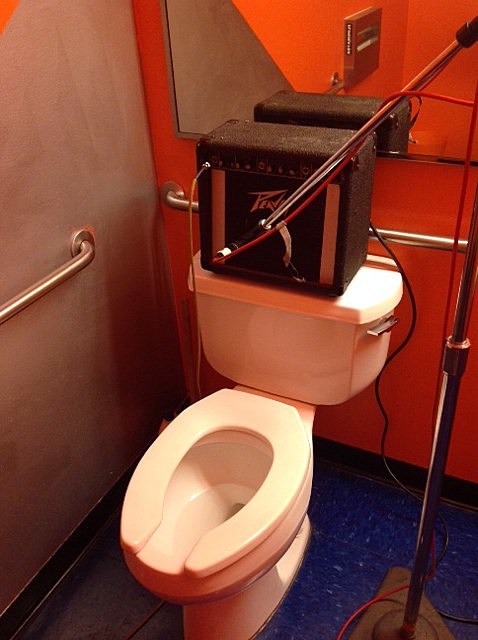
Photo by Dumitriu
…
For the vocals, recording them at home is certainly a viable option with the same financial benefits as reamping; that said, you’ll need at least a microphone and decent sound isolation to get the job done well. The latter isn’t always readily available, especially for those living in metropolitan apartments. Vhöl opted to get the job done right, tracking Mike Scheidt’s vocals at Light Rail. While most ordinary vocalists have a simple vocal line to follow for a song, Scheidt possesses a wide range, so his many vocal registers were laid to tape. “Our methodology with vocals, with Mike and I it would be like… Let’s do the death roar on this part. Okay, let’s double the death roar. Now we want a melodic vocal. Good, now let’s get a double of it. We want kind of a scream going behind that. Okay, now let’s double the scream. We want a harmony for the melodic vocal, let’s get a double of the harmony too.”
…







